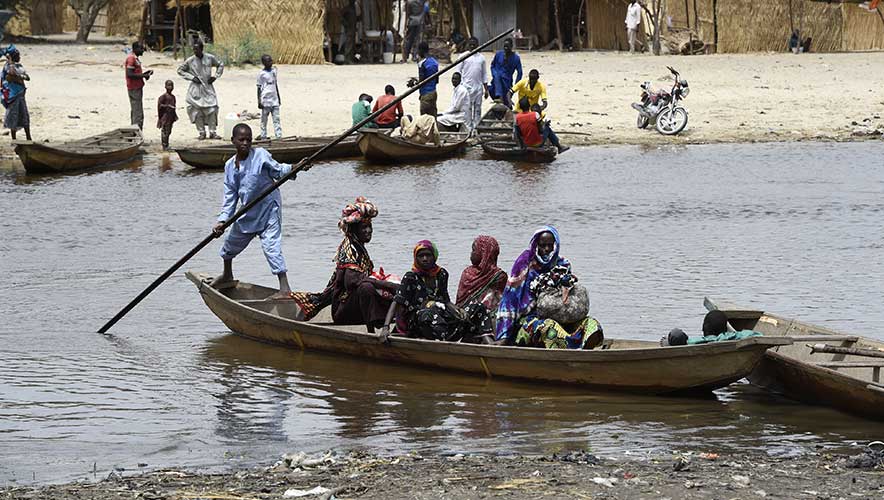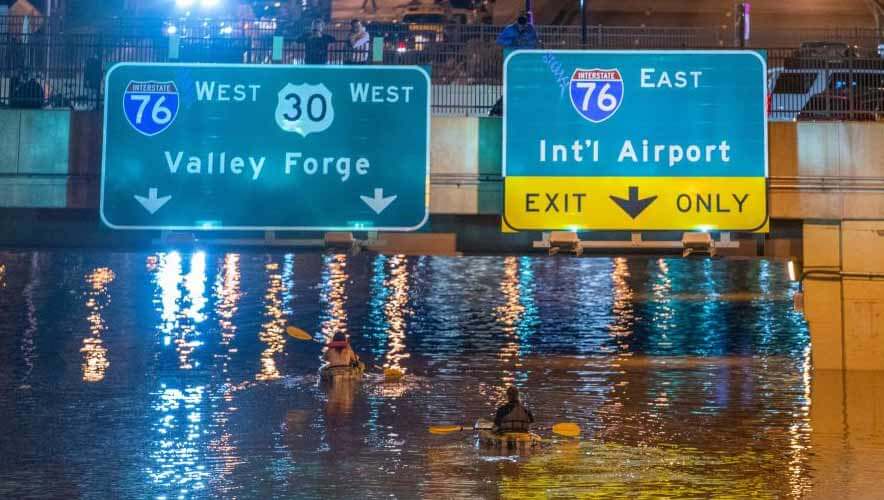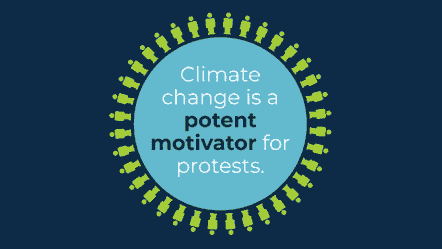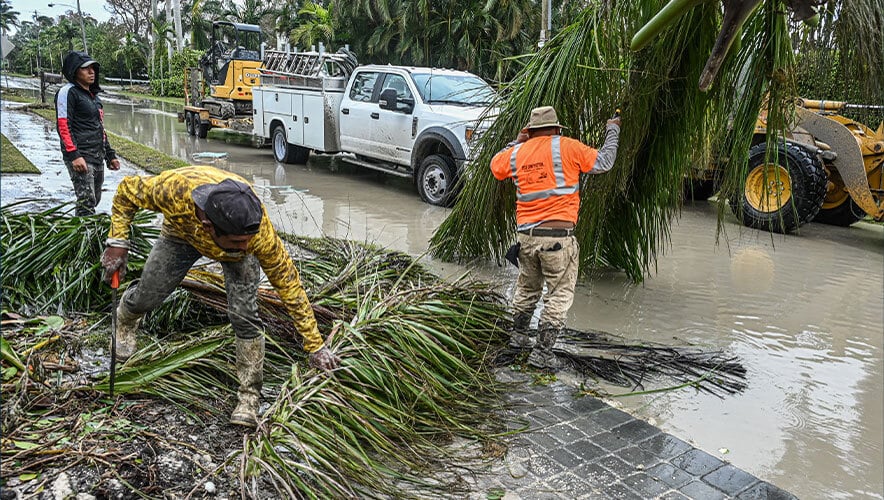The Climate Change–Violence Nexus: Implications for Workplace Violence Prevention and Threat Assessment
The climate responds to physics, not politics. Regardless of individual beliefs or group ideologies, the current situation requires security leaders to adopt a clear-eyed, non-partisan perspective on the security risks posed by climate change, and to focus their energies on mitigation and adaptation.
Today, the world is faced with the challenges presented by the nexus of climate change and security on a daily basis. Climate change is not a soft risk; it is a top security concern no less real or important than threats posed by workplace violence or cyberattacks.
Along with the devastating environmental effects of climate change, the climate crisis is also a disaster for human health and psychological well-being. Researchers have seen a rise in climate-related grief, anxiety, post-traumatic stress, and depression, as well as rising interpersonal aggression and violence and impaired cognitive and brain function—all of which have direct implications for safety, security, and business continuity.
Security studies since the early 1990s have been looking at the connection between the environment and violence, and there is a growing body of research demonstrating the link. There is increasing acknowledgment within the research and policy communities—and among the public and private security sectors—that climate change acts as a threat multiplier for a range of adverse behavioral impacts. Awareness of this relationship and integration of these concepts into violence prevention and threat assessment practices will become increasingly necessary as the planet continues to warm. To understand the relationship, it is important first to be aware of the behavioral effects of climate change ranging from that of individuals and groups, to the potential for civil unrest and war.
The Behavioral Health Impact of Climate Change
In a 2021 report discussing mental health and climate change, The American Psychological Association (APA) stated that, “The evidence is unequivocal that exposure to climate- and weather-related disasters has serious impacts on psychological well-being, and that the chronic impacts of climate change, such as higher temperatures and drought, also have significant negative effects on mental health.”
When discussing the behavioral effects of climate change, it is helpful to consider two primary sources: direct and indirect exposures.
Direct exposure includes the psychological impact of acute climate disasters that increase rates of post-traumatic stress disorder (PTSD), depression, anxiety, substance use, and the risk of suicide—especially if such risk is recurring. A report from the U.S. National Oceanic and Atmospheric Administration (NOAA) in October 2022 noted a significant shift in the prevalence of weather and climate disasters. Focusing on those extreme events that resulted in $1 billion or more in damages from 1980 to 2022 (adjusted for inflation), the frequency increased from one such event every 82 days to now one every 18 days.
Advances in attribution science have increasingly provided the public, scientists, and decision-makers with the means to understand the magnitude and frequency of extreme weather events, as well as the role of human-induced climate change. The frequency, intensity and duration of these acute weather disasters are only expected to increase in the years to come.
The impact can also be indirect, such as that caused by secondary effects of climate change, such as drought, sea level rise, migration, and displacement. These slower moving disasters can also cause significant mental health problems. Drought, for example, has been tied to farmer suicides. Food insecurity and thirst are tied to increased emotional distress.
Extreme storms and flooding, drought and wildfires result in displacement, causing not only physical damage, but often lasting emotional scars. According to the U.S. Census Bureau, natural disasters caused more than 3 million Americans to flee their homes in 2022. The data showed that more than half a million displaced people never returned home. Behavioral scientists use the term “solastalgia” to describe the last grief experienced by individuals losing a beloved home or their sense of connection to place. In the United States, 64 percent of young homeowners expect to move due to climate change in the next 30 years, so the potential for this form of grief is wide reaching.
Rising temperatures also exacerbate pre-existing mental health problems. For example, a study published in the Journal of the American Medical Association (JAMA) in February 2022 by researchers at Boston University found that days of extreme heat were associated with higher rates of behavioral health-related emergency department visits. Their research was based on the review of more than 330,000,000 hospital visits between 2010 and 2019. There was some evidence that the effects remained high for two to four days after extreme heat events.
The Nexus with Violence
While the behavioral health impacts related to climate change arise from extremes in both heat and precipitation, the science is strongest in the area of heat. Researchers have demonstrated correlations between higher temperatures (especially heat waves) and increased suicide rates, increased hospitalization and mortality for those with diagnosed mental health conditions, increased conflict and violence, and lower sleep quality leading to cognitive and emotional changes.
Floods are the most common form of disaster, but heat waves are the deadliest. U.S. Census Bureau and National Oceanic and Atmospheric Administration (NOAA) data indicate that more than half the U.S. population was under an extreme heat watch or warning at some point last summer. On 20 July 2022 alone, more than 146 million Americans (46 of the country’s population) were under an extreme heat watch or warning. From June to August 2022, persistent heatwaves affected parts of Europe, causing evacuations and more than 20,000 heat-related deaths, making these heat waves the deadliest meteorological events in 2022.
The influence of warmer weather on aggression and violence has been extensively studied. Both in laboratory experiments and field surveys, scientists have documented a causal relationship between heat and interpersonal aggression. (For more, see “Heat and Violence” by Craig A. Anderson; “Effects of Rapid Climate Change on Violence and Conflict” by Courtney Plante, Johnie J. Allen, and Craig A. Anderson; and “Climate Change and Psychology: Effects of a Rapid Global Warming on Violence and Aggression” by Andreas Miles-Novelo and Craig A. Anderson.) There is a demonstrated relationship between heat and interpersonal aggression—as the temperature goes up, people’s behavior becomes more aggressive. Heat affects arousal and irritability, with decreases in attention and self-regulation, as well as an increase in negative and hostile thoughts.
Published in 2022, the book Climate Change and Human Behavior, written by Miles-Novelo and Anderson, describes how high temperatures cause the brain to divert resources to other parts of the body to cool down, and that when people are overheated, they simply have trouble thinking straight. When the brain is not running at full capacity, it makes it harder for someone to process new information, manage emotions, and control impulses. They also found that there is cognitive disruption and distortion that can lead to poor problem-solving and over-reactions to perceived threats. When people are overheated, they also perceive other people as behaving more aggressively, increasing the odds of hostile confrontations, Miles-Novelo and Anderson wrote.
Neuroscientists have found that the same part of the brain that controls thermoregulation is responsible for emotional regulation, and that climate-related aggression appears to be a function of serotonin, dopamine, the hypothalamus, and the limbic system responding to ambient heat. Likewise, the body responds to heat by producing more adrenaline, resulting in more reactive and aggressive behavior when someone perceives that they are being provoked. Anderson suggested that, “We are ‘hardwired’ for an increase in aggression in high-heat conditions.”
From a violence prevention perspective, whether in the community, campus, or workplace, violence perpetrated by lone actors is a major concern, but not the only source of worry related to climate change.
The U.S. intelligence community has voiced concerns about global warming for years, but its climate work has expanded and taken on extra urgency as heat waves, drought and disasters exacerbate political tensions around the world. In 2021, the intelligence community published its first National Intelligence Estimate focused on climate change. It stated that as part of a strategy “To deter war and protect our country, the [Defense] Department must understand the ways climate change affects missions, plans, and capabilities.” The report emphasized that warming temperatures and increasingly erratic and intense precipitation may strain the country’s domestic military, energy, and economic infrastructure.
Protests and Eco-Fascism
Civil unrest and mass action have become an increasingly disruptive and dangerous form of climate activism. From throwing cans of soup on priceless paintings in European museums, to blocking highways in Australia, and acts of sabotage at cement plants in France, protest groups have employed provocative techniques to call attention to what they believe has been inadequate climate action. Formal protest networks and groups have been instrumental in driving climate activism, and their tactics have become increasingly aggressive.
In one recent example, protests against Atlanta’s Public Safety Training Center, referred to by opponents as “Cop City,” resulted in injury and death, as well as property destruction. The direct action campaign brought anti-policing activists together with environmental activists who were concerned with preserving the land where the training center would sit as an urban park and conservation area. Dozens of the protesters were arrested and face domestic terrorism charges.
Social and political instability resulting from climate change can also raise the risk of group violence. For example, research suggests that a single standard deviation increase in drought intensity can raise the chances of intergroup conflict in some regions by 62 percent.
Eco-migration resulting from climate-fueled disasters can motivate ingroup vs. outgroup violence as migrants threaten or are perceived to threaten access to critical resources. As people move from one region to another in search of water, food, energy and housing security, tensions can arise.
Eco-migration is likely to escalate exiting politically conservative, nationalist, anti-immigrant sentiments, and feed extremist ideologies. UN Secretary-General António Guterres has said that sea level rise could drive one in 10 people from their homes—with dangerous implications for international peace—and that “we would see ever-fiercer competition for fresh water and other resources. The impact of rising seas is already creating new sources of instability and conflict.” The Secretary-General warned that sea level rise could drive “a mass exodus of entire populations on a biblical scale.”
Eco-fascism served as a motivator in the mass shooting incidents in Christchurch, New Zealand; El Paso, Texas; and Buffalo, New York, with each of the perpetrators mentioning eco-fascist themes in their manifestos. The ideology combines white supremacy with environmentalism, believing that controlling the population, criminalizing migration, and rejecting multiculturism are the only ways to save the planet from environmental destruction. This “Dark Green” environmentalism builds upon the “blood and soil” ideas of Nazism. Eco-fascists believe that controlling migration and population growth is necessary to protect increasingly scarce resources for the rightful occupants of a nation.
Lastly, the National Consortium for the Study of Terrorism and the Response to Terrorism (START) at the University of Maryland’s report A Climate for Terror explains that “while climate change may not be a direct ‘root cause’ of terrorism, it is recognized as a predominant destabilizing force that fosters an enabling environment for violent extremist organizations (VEOs).”
Climate change serves as an ideological driver of terrorism and as a means for terrorist exploitation to control or coerce populations.
Implications for Violence Prevention
Information about the relationship between climate change and violence can be valuable to any professional concerned with workplace, campus, or community violence prevention, including those involved in threat assessment and management.
It will be important to prepare for the likelihood of an increased risk of violence and to adapt violence prevention and threat management approaches accordingly in response to the dynamics of a warming planet. Plans, policies, procedures, and even exercises will require recalibration to this new environment. Behavioral threat assessment and management (BTAM) models should consider current and projected climate change, as these factors can influence the timing, frequency, and intensity of threats and other behaviors of concern.
Becoming a Climate-Informed Professional
Becoming climate-Informed means developing an awareness of the impact of climate change in general, and specifically on human behavior, as well as integrating this awareness into professional activities. Climate-informed security management and violence prevention will help professionals better adapt to and mitigate the behavioral challenges associated with climate change, especially disruptive and dangerous behaviors.
Becoming a climate-informed leader and practitioner is a process involving several steps, including:
- Become climate literate and familiar with the science of climate change with information from diverse and credible sources.
- Learn about the impact of climate change on health and wellness.
- Understand the relationship between climate change, human behavior, and violence.
- Explore strategies to mitigate and adapt security, emergency management, and business continuity practices to climate change.
- Lead as a climate-informed professional and sharing information with others in the field.
The science of climate change is clear. Temperatures are increasing, sea levels are rising, and severe storms are becoming more frequent and intense. Climate change—in both scale and potential impact—is a strategically significant security risk for organizations of all types and sizes. The national and international security communities, including militaries and intelligence agencies, recognize and understand these risks, and they have started to take actions to address them. Climate change is already having far-reaching impacts on the economy, the environment, and the way we conduct our everyday lives. It may very well be the most serious security challenge will face in our lifetimes, and it will require every professional to lean in and prepare for the changes ahead.
Steve Crimando, MA, CTM, is an emergency behavioral health specialist and threat assessment professional. He is founder and principal of Behavioral Science Applications LLC, and a member of the Steering Committee for the ASIS International Extremism and Political Instability Community (EPIC).
Crimando is a Certified Threat Manager (CTM) with the Association of Threat Assessment Professionals (ATAP), and a Certified Master Trainer for the U.S. Department of Homeland Security National Threat Evaluation and Reporting (NTER) program. He was deployed to both the 9/11 and 1993 World Trade Center attacks, the Northeast anthrax screening center, and many other disasters and acts of terrorism. Crimando provides crisis intervention and violence prevention training and support to multinational businesses, law enforcement, intelligence, and military organizations, as well as NGOs, worldwide.












